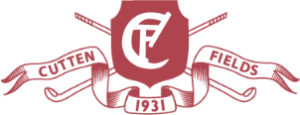The History of Cutten Fields
Guelph’s Golf Course
Our story began on a cold day in December, 1927. Mr. Arthur Cutten envisioned a golf course, a 200 room hotel and a sports complex located in the area of the College, accessible to all the citizens of Guelph. Mr. Cutten was prepared to underwrite the costs and donate the entire complex to the city where he was born.
Mr. Chick Evans, a prominent golfer and golf course architect from Chicago, had been commissioned to design the course. He was subsequently joined by Mr. Stanley Thompson from Toronto, who was also a course architect. Together they completed the project in 1931.
When the club was officially opened on June 10, 1931, it was named Cutten Fields Golf Club. At this time the course was 6,400 yards long and had a par 70 rating. It is reputed to have cost Mr. Cutten $750,000 – a staggering sum considering the year was 1931 and the country was in the midst of a depression.
Mr. Cutten had built the course and club with the intention of presenting it to the City of Guelph. However, Mayor Robson and the City Council of the time felt that the maintenance costs and deficits that could be encountered should not be borne by the taxpayers of Guelph, so the offer was declined. The club was a pay-as-you-play golf course when originally opened, although it also solicited members.

Our Founder – Arthur Cutten
Born and raised in the City of Guelph, our founder Arthur Cutten created Cutten Fields with the intention of donating it to the city. This is just one example of Mr. Cutten’s well documented philanthropy work which extended to his time spent in Chicago.
Closing the Cutten Estate
After Mr. Arthur Cutten’s death in 1936, the club was required to close the Cutten estate, which necessitated that the club be sold. Mr. Stanley Thompson, together with Mr. Donald Ross, a stockbroker in Toronto and also owner of the Toronto Maple Leafs Baseball Club, joined together to purchase the golf club in 1939. They offered the sum of $22,500 for the entire layout.
The arrangement was that Mr. Thompson would be responsible for the operation of the club. Around 1948 Mr. Thompson began selling some of the land for real estate development. The area alongside the thirteenth fairway was subdivided, and the lane to the stone house was called Dormie Lane. The club continued to operate from the large stone house situated on the thirteenth fairway. In 1940, the RCAF took over the Ontario Agricultural College, while the Cutten Club Clubhouse was used as a short-term residence, providing meals and sleeping accommodations.
In 1943, the RCAF closed the station and the Cutten Club and the College returned to normal. Mr. Stanley Thompson died in 1953. Mr. G. Ernest Robertson, who was a club member and an ardent golfer, was concerned that the club may eventually be sold for real estate development. Mr. Robertson contacted sixteen of the major companies in Guelph and six decided to participate. They were the Biltmore Hat Co. Ltd., Fiberglas Canada Ltd., the Callendar Foundry, International Malleable Iron Co., the T. Eaton Co. Ltd. of Toronto and Matthew Wells Ltd.
Stanley Thompson Legacy
A classic figure of golf course architecture, Stanley Thompson and his dramatic flair has left his mark on Guelph through Cutten Fields. Having supported the design process, Stanley Thompson later became the owner of the course just years after its opening.

Continued Effort to Improve
As membership was growing rapidly and the club was developing in stature and tradition, Cutten Fields moved away from the pay-as-you-play model and became a private club. To handle this additional membership, a new addition to the clubhouse was added with party and banquet space. When completed in the mid 1970’s, the club took on an entirely new appearance and had added squash and two squash courts to its sporting activities.
The club’s tennis facilities were added in 1985 and continue to flourish today. Subsequent renovations in 1995 removed the then underutilized squash facilities to make room for a much needed, larger, and more modern ladies’ locker room. In addition, the men’s locker room was also expanded.
In the years between the late 50’s and early 80’s, the purchase of shares by the University of Guelph from the six participating Guelph companies leaves the University as the sole shareholder of the Guelph Golf and Recreation Club Ltd., or Cutten Fields as we fondly know it today.
The Cutten Club has progressed from a small pay-as-you-play club to one recognized as one of the finest in the country. No longer just a golf course, but an institution, and proud to be a permanent part of the beautiful city of Guelph. In line with the Stanley Thompson tradition, the club prides itself on its continued effort to improve and upgrade — both on the course and in the clubhouse.
It is sincerely hoped that in the years to follow, the members will continue to enjoy the warm and friendly atmosphere that prevails here today.
Membership Programs
Cutten Fields is a non-profit, member-run club offering a number of different membership options.


